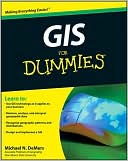Category Books
- Fiction Books & Literature
- Graphic Novels
- Horror
- Mystery & Crime
- Poetry
- Romance Books
- Science Fiction & Fantasy
- Thrillers
- Westerns
- Ages 0-2
- Ages 3-5
- Ages 6-8
- Ages 9-12
- Teens
- Children's Books
- African Americans
- Antiques & Collectibles
- Art, Architecture & Photography
- Bibles & Bible Studies
- Biography
- Business Books
- Christianity
- Computer Books & Technology Books
- Cookbooks, Food & Wine
- Crafts & Hobbies Books
- Education & Teaching
- Engineering
- Entertainment
- Foreign Languages
- Game Books
- Gay & Lesbian
- Health Books, Diet & Fitness Books
- History
- Home & Garden
- Humor Books
- Judaism & Judaica
- Law
- Medical Books
- New Age & Spirituality
- Nonfiction
- Parenting & Family
- Pets
- Philosophy
- Political Books & Current Events Books
- Psychology & Psychotherapy
- Reference
- Religion Books
- Science & Nature
- Self Improvement
- Sex & Relationships
- Social Sciences
- Sports & Adventure
- Study Guides & Test Prep
- Travel
- True Crime
- Weddings
- Women's Studies
GIS for Dummies »

Authors: Michael N. DeMers
ISBN-13: 9780470236826, ISBN-10: 0470236825
Format: Paperback
Publisher: Wiley, John & Sons, Incorporated
Date Published: February 2009
Edition: (Non-applicable)
Author Biography: Michael N. DeMers
Michael N. DeMers is an Associate Professor of Geography with more than 25 years of GIS experience. He is also CEO of DeMers Geographics, a provider of educational resources for GIS students and educators.
Book Synopsis
Curious about GIS?
Organizing a GIS?
Here's the book you need!
Geographic information system, or GIS, is a powerful technology that has been called "geography on steroids." This book contains what you need to know on mapping terminology and digital mapping, how to locate geographic features and analyze their patterns, and how to generate travel directions, customer locations lists, and much more with GIS.
- GIS takes a village — know all the hardware and software necessary to collect, analyze, and manipulate GIS data
- Just for map mavens — explore the difference between 2D and 3D maps, create a map, or manage multiple maps
- What the data mean — analyze patterns that appear in maps and interpret the results
- Think spatially — recognize how spatial factors relate to geographic data
- On the grid — define and locate geographic objects on the grid
- The earth is not flat — accurately portray geographic features with map projections
- Technological duct tape — discover the many uses of GIS for business, the military, city planning, emergency services, land management, and more
- Design a GIS — determine what your organization needs, do appropriate analyses, and plan your system
Open the book and find:
- How to get paper maps into your computer
- Different ways to measure distance
- How to organize your spatial data
- What raster and vector mean to a cartographer
- How to choose a GIS software vendor
- How GIS can help you determine appropriate land use
- Dozens of applications for GIS queries and analyses
- How to create animated GIS output
Table of Contents
Introduction.
Part I: GIS: Geography on Steroids.
Chapter 1: Seeing the Scope of GIS.
Chapter 2: Recognizing How Maps Show Information.
Chapter 3: Reading, Analyzing, and Interpreting Maps.
Part II: Geography Goes Digital.
Chapter 4: Creating a Conceptual Model.
Chapter 5: Understanding the GIS Data Models.
Chapter 6: Keeping Track of Data Descriptions.
Chapter 7: Managing Multiple Maps.
Chapter 8: Gathering and Digitizing Geographic Data.
Part III: Retrieving, Counting, and Characterizing Geography.
Chapter 9: Finding Information in Raster Systems.
Chapter 10: Finding Features in Vector Systems.
Chapter 11: Searching for Geographic Objects, Distributions, and Groups.
Part IV: Analyzing Geographic Patterns.
Chapter 12: Measuring Distance.
Chapter 13: Working with Statistical Surfaces.
Chapter 14: Exploring Topographical Surfaces.
Chapter 15: Working with Networks.
Chapter 16: Comparing Multiple Maps.
Chapter 17: Map Algebra and Model Building.
Part V: GIS Output and Application.
Chapter 18: Producing Cartographic Output.
Chapter 19: Generating Non-Cartographic Output.
Chapter 20: GIS in Organizations.
Part VI: The Part of Tens.
Chapter 21: Ten GIS Software Vendors.
Chapter 22: Ten Questions to Ask Potential Vendors.
Chapter 23: Ten GIS Data Sources.
Index.
Subjects
 Atlases & Maps
Atlases & Maps  Cartography
CartographyScience & Nature
 Earth Sciences
Earth Sciences  Cartography
CartographyScience & Nature
 Earth Sciences
Earth Sciences  Geography - General & Miscellaneous
Geography - General & MiscellaneousScience & Nature
 All Science & Nature
All Science & Nature  Earth Science
Earth ScienceNonfiction
 Reference
Reference  Atlases & Maps
Atlases & MapsNonfiction
 Science & Nature
Science & Nature  Earth Sciences
Earth SciencesNonfiction
 Science & Nature
Science & Nature  All Science & Nature
All Science & Nature
